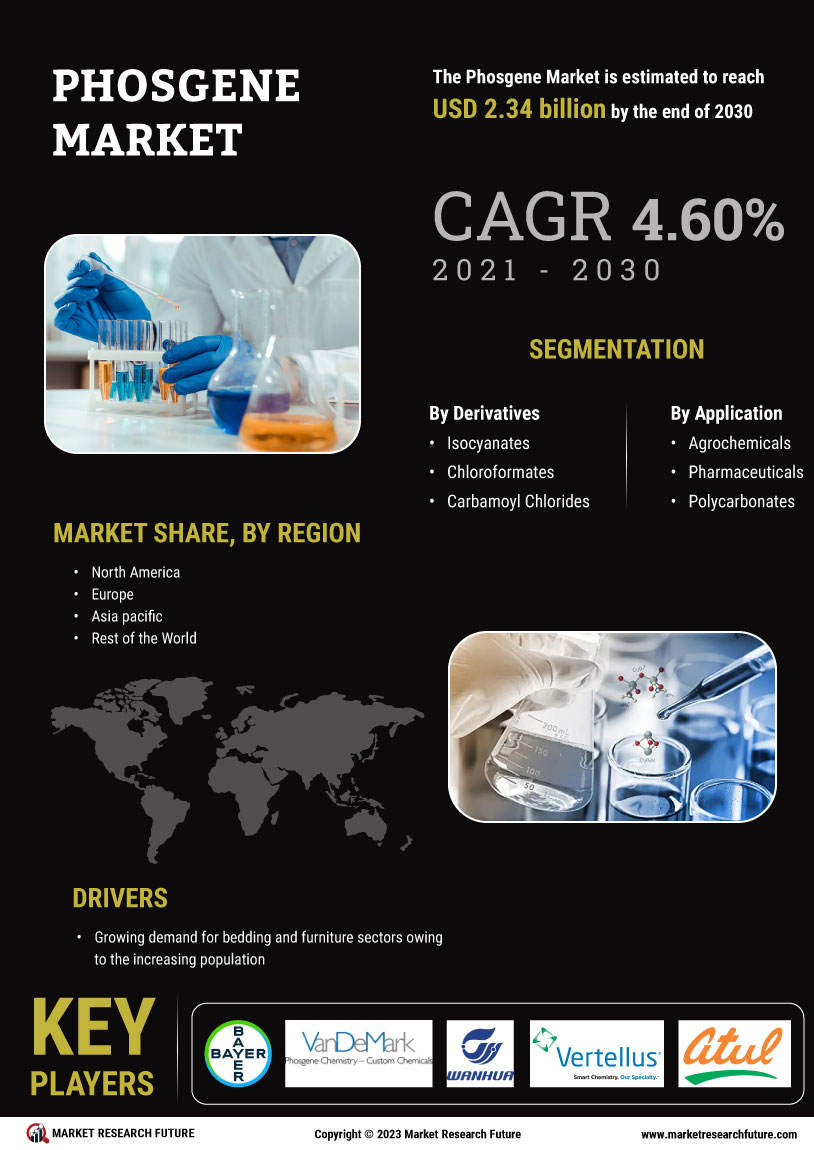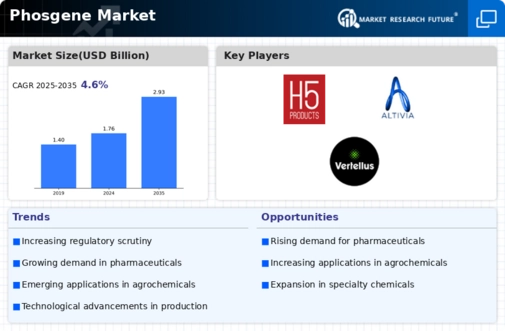Market Trends and Projections
The Global Phosgene Market Industry is poised for growth, with projections indicating a market value of 1.76 USD Billion in 2024 and an anticipated increase to 2.93 USD Billion by 2035. This growth trajectory suggests a compound annual growth rate (CAGR) of 4.74% from 2025 to 2035. Factors contributing to this upward trend include increasing demand in chemical synthesis, pharmaceutical applications, and the rising use of polycarbonate plastics. Additionally, advancements in production technologies and adherence to regulatory standards are likely to shape the market landscape, ensuring a dynamic and evolving industry.
Growth in Pharmaceutical Applications
Phosgene's utility in the pharmaceutical sector significantly contributes to the Global Phosgene Market Industry. It is utilized in the synthesis of numerous active pharmaceutical ingredients (APIs), which are essential for drug formulation. The increasing focus on drug development and innovation is anticipated to bolster the demand for phosgene in this sector. As pharmaceutical companies strive to enhance their product offerings, the market is expected to benefit from this trend. The projected growth in the pharmaceutical sector could lead to a substantial increase in market value, potentially reaching 2.93 USD Billion by 2035.
Increasing Demand in Chemical Synthesis
The Global Phosgene Market Industry is experiencing heightened demand due to its critical role in chemical synthesis. Phosgene serves as a vital intermediate in the production of various chemicals, including isocyanates and polycarbonate plastics. As industries such as automotive and construction expand, the need for these materials grows. In 2024, the market is projected to reach 1.76 USD Billion, reflecting a robust demand trajectory. This trend is likely to continue as manufacturers seek efficient and cost-effective solutions for chemical production, thereby driving the growth of the Global Phosgene Market Industry.
Rising Demand for Polycarbonate Plastics
The Global Phosgene Market Industry is significantly driven by the rising demand for polycarbonate plastics, which are widely used in various applications, including electronics, automotive, and construction. Phosgene is a key precursor in the production of these plastics, and as industries continue to expand, the demand for polycarbonate materials is likely to increase. This trend is expected to contribute to the market's growth, with projections indicating a market value of 2.93 USD Billion by 2035. The versatility and durability of polycarbonate plastics make them a preferred choice, further propelling the demand for phosgene in the global market.
Regulatory Compliance and Safety Standards
The Global Phosgene Market Industry is influenced by stringent regulatory compliance and safety standards. Governments worldwide are implementing regulations to ensure the safe handling and use of hazardous chemicals, including phosgene. This regulatory landscape compels manufacturers to invest in safety measures and technologies that mitigate risks associated with phosgene usage. While this may increase operational costs, it also fosters innovation in safety protocols and equipment, ultimately benefiting the industry. As companies adapt to these regulations, the market is likely to witness a steady growth trajectory, aligning with the overall expansion of the chemical sector.
Technological Advancements in Production Processes
Technological advancements play a pivotal role in shaping the Global Phosgene Market Industry. Innovations in production processes, such as more efficient synthesis methods and improved safety measures, are enhancing the overall efficiency of phosgene production. These advancements not only reduce costs but also minimize environmental impact, making phosgene a more attractive option for manufacturers. As companies adopt these technologies, the market is expected to grow at a compound annual growth rate (CAGR) of 4.74% from 2025 to 2035. This growth reflects the industry's commitment to sustainability and efficiency in chemical production.




